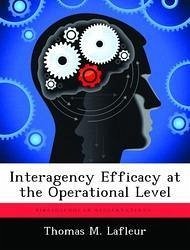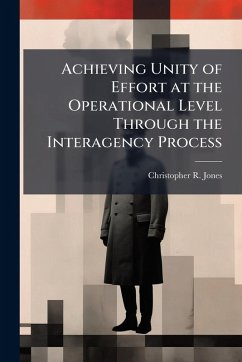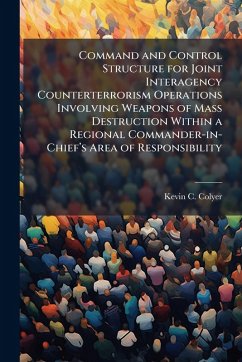
Interagency Efficacy at the Operational Level
Versandkostenfrei!
Versandfertig in über 4 Wochen
15,99 €
inkl. MwSt.

PAYBACK Punkte
8 °P sammeln!
The interagency process is a series of hierarchical committees that set the conditions for the President to achieve national objectives by synchronizing the instruments of national power. After the fall of the Soviet Union, increased integration and coordination within the interagency was required in order to contend with increasingly complex global contingencies. This caused a colossal struggle between the President and Congress that redefined the role of the President in dealing with these contingencies. To address interagency coordination in this complex environment, President Clinton estab...
The interagency process is a series of hierarchical committees that set the conditions for the President to achieve national objectives by synchronizing the instruments of national power. After the fall of the Soviet Union, increased integration and coordination within the interagency was required in order to contend with increasingly complex global contingencies. This caused a colossal struggle between the President and Congress that redefined the role of the President in dealing with these contingencies. To address interagency coordination in this complex environment, President Clinton established PDD 56, The Clinton Administration's Policy on Managing Complex Contingency Operations. However, due to continued congressional pressure, organizational friction at the department level, and insular Presidential level decision-making, the changes in PDD 56 were never fully implemented. What is needed is strong, supra-departmental control of the interagency process at the operational level. Such control will enable effective oversight of interagency planning and reduce departmental friction in order to provide the President with an integrated approach to problem solving in the post-Cold War environment. This work has been selected by scholars as being culturally important, and is part of the knowledge base of civilization as we know it. This work was reproduced from the original artifact, and remains as true to the original work as possible. Therefore, you will see the original copyright references, library stamps (as most of these works have been housed in our most important libraries around the world), and other notations in the work. This work is in the public domain in the United States of America, and possibly other nations. Within the United States, you may freely copy and distribute this work, as no entity (individual or corporate) has a copyright on the body of the work. As a reproduction of a historical artifact, this work may contain missing or blurred pages, poor pictures, errant marks, etc. Scholars believe, and we concur, that this work is important enough to be preserved, reproduced, and made generally available to the public. We appreciate your support of the preservation process, and thank you for being an important part of keeping this knowledge alive and relevant.












